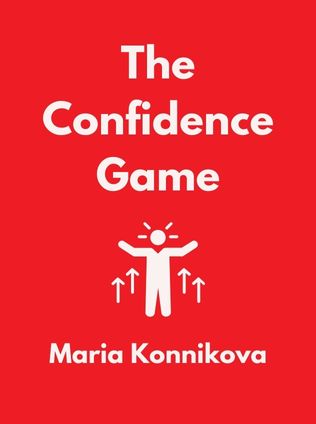
The Confidence Game
Why We Fall for It . . . Every Time
By Maria Konnikova
Published 01/2015
About the Author
Maria Konnikova, an esteemed psychologist and writer, has carved a unique niche in the literary world by blending deep psychological insights with compelling narratives. She is the author of The Confidence Game, published in 2016, where she delves into the intricate workings of human psychology through the lens of con artists and their victims. Konnikova’s fascination with the human mind is evident in all her works, including the New York Times bestsellers Mastermind (2013) and The Biggest Bluff (2020). Her deep dive into human behavior is not just academic; she has demonstrated a keen ability to apply her understanding in real-world scenarios. For instance, her research for The Biggest Bluff led her to become an international poker champion and professional poker player, a testament to her ability to not only understand the human psyche but also to leverage it in competitive environments.
Konnikova is also a regular contributor to The New Yorker, where her articles often explore the intersection of psychology, culture, and personal experience. Additionally, she hosts a podcast titled The Grift, which focuses on the stories of con artists, offering listeners a closer look at the minds behind some of the most notorious scams in history. Her work is characterized by a narrative style that is both accessible and insightful, making complex psychological concepts understandable and relatable to a broad audience. In The Confidence Game, she uses this approach to unravel why we are so easily duped by con artists and what this says about the deeper aspects of human nature.
Main Idea
The central theme of The Confidence Game is the exploration of why intelligent, rational people fall prey to cons, and what this reveals about the nature of trust, belief, and deception. Konnikova argues that con artists exploit basic human instincts—such as the desire to believe in something greater, the need for connection, and the tendency to trust. The book dissects the anatomy of a con, detailing the various stages from the initial "put-up" to the final "blow-off." Konnikova’s analysis goes beyond the mechanics of the con to explore the psychological underpinnings that make these tactics so effective. She suggests that understanding these manipulation tactics is crucial not only for avoiding being conned but also for understanding the stories we tell ourselves about who we are and what we believe in.
Table of Contents
- Introduction: The Confidence Game
- The Grifter and the Mark
- The Put-Up
- The Play
- The Rope
- The Tale
- The Convincer
- The Breakdown
- The Send
- The Touch
- The Blow-Off
- The Fix
Introduction: The Confidence Game
In the introduction, Konnikova sets the stage by explaining the timeless nature of the confidence game. Con artists have existed for as long as human society itself, thriving on our innate tendencies to trust and believe in what seems too good to be true. Konnikova asserts that the con artist is not merely a criminal but a master of human psychology, someone who understands and manipulates the social and emotional bonds that hold communities together. She writes, "The con artist is someone who understands not only how to deceive, but also how to elicit trust, sympathy, and compliance from their victims" (Konnikova).
Konnikova's approach is both academic and narrative, blending psychological research with real-life stories of cons throughout history. This dual approach helps the reader grasp the universal principles at play while also engaging with the material on a personal level. The introduction makes it clear that this book is not just about understanding con artists; it's about understanding ourselves and the vulnerabilities that make us human.
The Grifter and the Mark
Konnikova begins by defining the key players in any con: the grifter (con artist) and the mark (victim). She argues that anyone can be a mark, regardless of intelligence or education level, because cons exploit fundamental human desires and biases. The con artist, or grifter, is typically someone with a deep understanding of psychology, able to read people and adapt their tactics to exploit specific vulnerabilities.
Sign up for FREE and get access to 1,400+ books summaries.
You May Also Like
The Subtle Art of Not Giving a F*ck
A Counterintuitive Approach to Living a Good Life
By Mark MansonRich Dad Poor Dad
What the Rich Teach Their Kids About Money - That the Poor and Middle Class Do Not!
By Robert T. KiyosakiHow To Win Friends and Influence People
The All-Time Classic Manual Of People Skills
By Dale CarnegieFreakonomics
A Rogue Economist Explores the Hidden Side of Everything
By Steven D. Levitt and Stephen J. Dubner



















